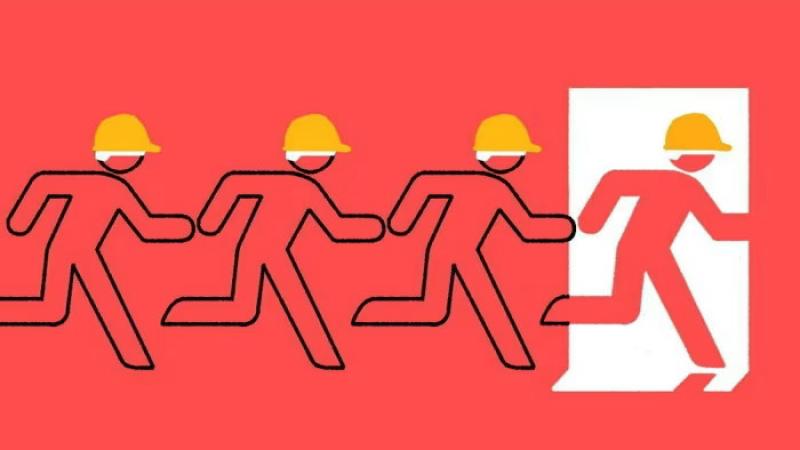DeepSeek hints that China has mastered the art of ‘kaizen’ — the west should be worried
By: Leo Lewis (FinancialTimes)


Financial wizards who get rich by exploiting innovation love myths that justify their existence. The space pen is a distraction, the myth is Kaizen.
Kaizen is a Japanese philosophy for continuous process improvement. The Kaizen philosophy was effective because traditional Japanese culture was very hierarchical and revered mastery of process. In Japan, the Master micromanaged the process; individual workers were not allowed very much ownership or independence in the tasks they performed. In Japan, the manager is expected to manage the process.
The traditional American culture reveres independence and individual ownership of the tasks they perform. The America worker is the master of the process and will naturally improve the process to an optimum if allowed sufficient independence. The American manager is expected to manage people and provide leadership.
In the United States, the Kaizen philosophy appeals to micromanagers who do not trust their employees. Kaizen became a popular myth in the 1980s for managers who had been trained to manage processes but really knew nothing about running a business. MBAs are not taught leadership skills.
Which brings the discussion back to DeepSeek. The team that optimized and improved the efficiency of DeepSeek didn't have a big budget or large staff. The effort didn't require a top heavy management structure. The development of DeepSeek was nimble, independent, and not micromanaged. DeepSeek may portend a shift in business philosophy. The Chinese might be more like tradition American business and the Americans might be more like traditional Chinese business.
American business have used a Kaizen philosophy to lose its competitive edge. Spending is not innovation. Micromanagement impedes efficiency. And myths to justify middlemen only fosters the complacency of blaming scapegoats.

In the white heat of the space race, America spent millions of taxpayer dollars developing a ball-point pen that would work in zero gravity. Confronted with the same problem the Russians used . . . a pencil.
This is, inconveniently, a fairytale. Both sides tried pencils and both sides ended up using the Space Pen, a product developed entirely in the private sector. But the myth often resurfaces as an industrial, geopolitical and ideological parable because it nicely captures the terror that infuses all those fields: that the other company/side/economic model can, and may, be structurally better placed to work smarter and cheaper.
Did the “Space Pen” meme return this week as investors and governments gawped at China’s supposedly low-cost DeepSeek AI model, wondered whether US export controls had backfired, then lost their nerve around the billions invested in the more costly American approach to the same problem? Of course it did.
The more unsettling phrase of the moment, though, should be kaizen — the Japanese concept of “continuous improvement” which once struck nervous awe into US corporate hearts and which China, one way or another, now looks to have quietly mastered. Partly by hiring Japanese kaizen masters undervalued in their own economy.
Kaizen first properly entered the international business lexicon in the 1980s, when American and European companies needed to understand why Japanese companies were beating them — in terms of both price and quality — on cars, consumer electronics and semiconductors. It suited both sides to identify the differentiator as a patient, distinctly Japanese, betterment of product and process.
The practical effects of kaizen were remarkable: they were among the prime reasons that Japan’s economy became huge in the 1970s and 80s, and why so many of its companies retain global competitiveness in a formidable range of manufacturing fields.
But kaizen’s evolution during Japan’s long, stagnant post-bubble decades is perhaps more extraordinary. Once the era of financial excess evaporated, kaizen became a survival superpower: a simultaneous propellant of higher quality and leanness in corrosive times. Deflation, and the inability of Japanese manufacturers to secure pricing power in their domestic market, made cost-cutting a fine art.
Chinese manufacturers, with their attention long fixed on cost and technology, have been closely scrutinising all this, and have seen ways to make kaizen their own. DeepSeek may represent a software breakthrough, but it is one borne on the shoulders of a now relentlessly, incrementally advancing hardware sector.
Many will argue that China’s acquisition of technology has been opportunist at best and underhanded at worst. Where outright theft or coercion is not blamed (and it is, frequently), foreign companies have lost key technology to badly formulated transfer deals or excessive optimism over the ability to protect IP. But that has long ceased to explain everything.
In China’s most recent and visible industrial achievements — the production of low-cost, competitive quality electric cars, consumer electronics, industrial machinery, high speed trains and robots — some version of kaizen is now at work. And there are reasons to suspect that the Chinese iteration may, for a stint, work faster, more disruptively and with more visible results, than the original.
First, China has the numbers and talent to throw at kaizen on a much larger scale than Japan ever mustered. Increments work best when there are a lot of them.
Second, it is happening in an era where consumers are far quicker to identify and communicate when a product is not exactly as they would like it.
But a third is that they may be able to pay for speed. As well as directly observing kaizen in action at Japanese manufacturing operations, Chinese companies, according to recruitment agents in Tokyo, have found they can lure away Japanese semiconductor, railway and robotics engineers as consultants. This is not new, say the agents, but it is now sharply accelerating.
Japanese companies tend to retire highly qualified people early, have not, for some years during the deflationary period, paid them especially handsomely and have instilled less parting loyalty than they might have hoped. They can be paid well by a Chinese company and, without explicitly imparting industrial secrets, their worth is immense: kaizen is fundamentally a process of trial and error, and an experienced engineer can impart the invaluable, cost-saving nod on what was tried but didn’t work.
Advice such as: forget the pencil, it was useless.

Tags
Who is online
50 visitors


Lead, follow, or get out of the way. That's a very American sentiment that has nothing to do with process. And the Kaizen philosophy cannot improve upon it.
They would be nowhere without stealing tech from others.
Nowhere.
Open source means the source code is publicly accessible and can be used, modified, and distributed by anyone. So, what did the DeepSeek team steal?
C’mon Nerm, you are smarter than that ….. a simple google search tells the tale of rampant Chinese tech theft of the past.
That doesn't tell us what the DeepSeek team stole.
You know, it takes a lot of skill and ability to hack into secure government computers and encode backdoors into microchips and software. There are somewhere around 50,000 Chinese H-1B workers in the US. Should we be outraged at American business geniuses or the Chinese when Chinese nationals are hired on H-1B visas to take American jobs? If American fat cats sell out the US just to make a nickel, why is that the fault of the Chinese?
Any predilection to somehow blame the US for Chinas active espionage program is way off base imo.
I don’t really care how it happens. I only care about trying to stop it.